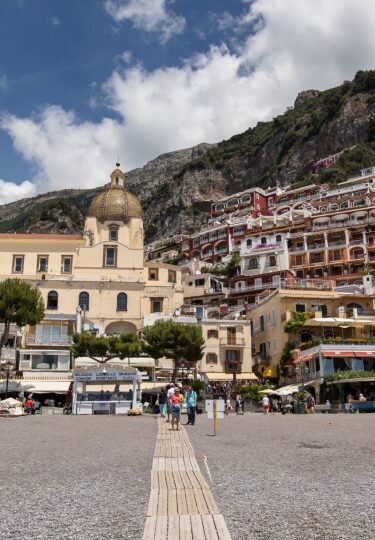One of the chief things to do in Positano, considered by many to be the most beautiful town on Italy’s colorful Amalfi Coast, is to simply explore and absorb this former fishing village’s unique character.
Follow its narrow lanes through its famously bright and baroque architecture. Discover tiny piazzas where all the talk would once have focused on the events of the sea.
It becomes quickly apparent, as you scramble up tiny stairways and glimpse villas seemingly floating overhead in the abrupt topography, how a fishing village came to embody the ideal of glamor. Take a seat at one of the seafront restaurants where you can watch the light sparkling on the waves, and eavesdrop on the passionate conversations at neighboring tables.
Here are nine of the best things to do in Positano—and along the glorious coast on which it lies.
Watch the Spectacle at Positano Beach

Positano Beach
While Positano is technically a town, with its pastel buildings arrayed across verdant hills, the source of Positano’s essence is found on its beach.
Positano Beach, also known as Spiaggia Grande, is a vibrant gathering in the summer months. It’s a tapestry of expensive animal print and gold-accessorized beachwear, a testament to the town’s heritage as the first place to import bikinis in Italy.
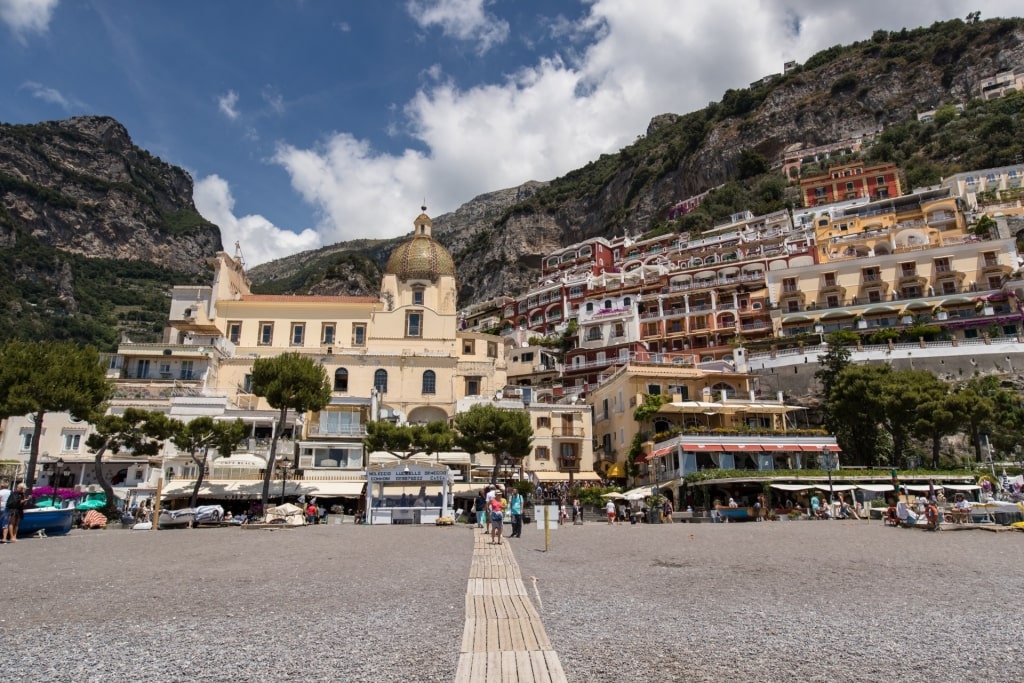
Positano Beach
Beneath it all, this is an ordinary, spacious, gray-shingle beach in an extraordinary location. You can imagine the crunch of hull upon shingle as the fishing boats used to be pulled up onto the shore.
But the Italian families and the jet set have all the space now. The sleek yachts at anchor are essentially a temporary offshore suburb.
Bronzing and posing are some of the main things to do in Positano Beach, although an easygoing vibe prevails, especially in the central “free beach” area. If you’d rather be a spectator than a participant, find a chair at a beachside bar and enjoy the parade.
Discover a Sunken Roman Villa
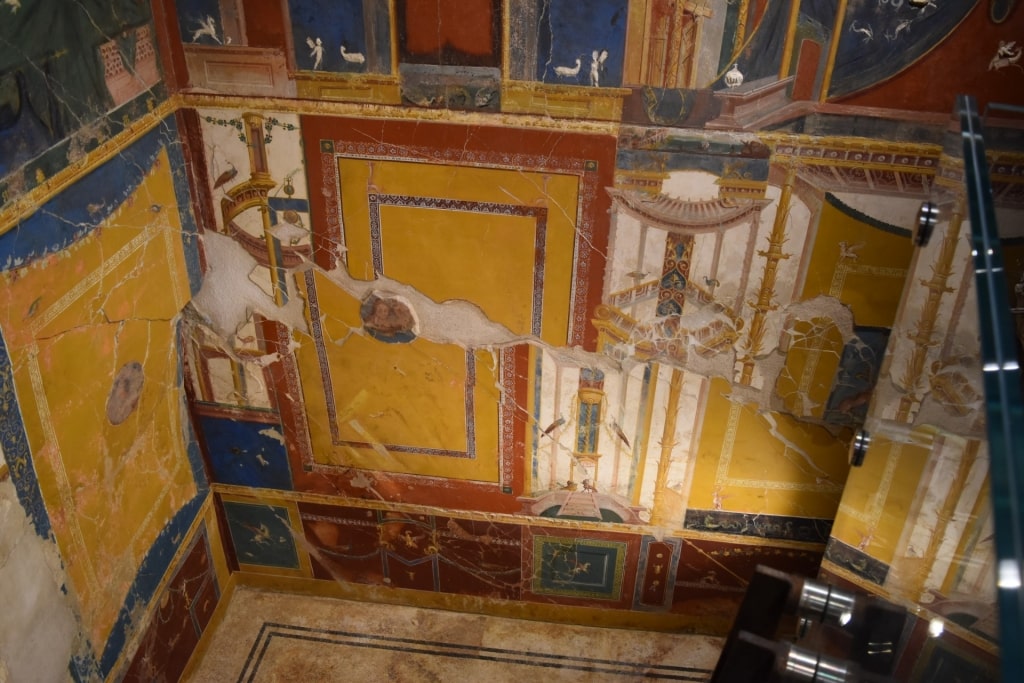
Villa Romana di Positano Photo by MaR Positano on Wikimedia Commons, licensed under CC BY-SA 4.0
Demonstrating that Positano’s architectural beauty runs deep is the town’s Roman seaside villa, preserved beneath the church of Santa Maria dell’Assunta.
Excavation began on this little slice of Pompeii in Positano in 2003 and was only completed by 2016. Now that it’s open to the public, you can descend 30 feet down into the crypt, to see this remarkable relic of the Roman elite.
Intact since the 79 AD eruption of Vesuvius, the villa’s vivid frescos, stuccos, and ornate mosaic floor are impressively preserved. Only a small portion of the villa has been excavated, with experts believing that the site actually covers more than two acres.
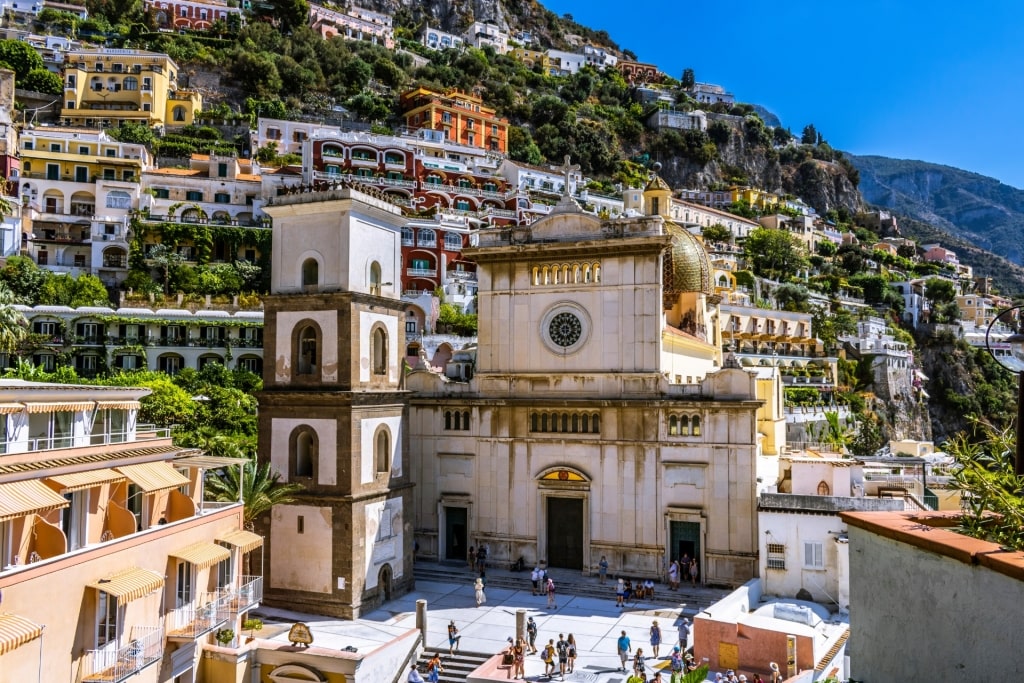
Santa Maria dell’Assunta
Afterward, take a tour of the church. With a history that’s involved a great deal of piratical looting across the centuries, the look of the church today dates back to the late 18th century.
Of particular note is the bas-relief dating back to the Middle Ages on the bell tower’s door. Above it is a gravestone for Flavio Gioia, better known as the inventor of the compass.
Shop for Handmade Leather Sandals

Handmade leather
While it would be easy to imagine that Positano’s traditions had long been worn away by the erosive powers of tourism, the good news is that the town’s leather-making and ceramics traditions remain in robust health.
In fact, it was the travelers arriving in large numbers in the 1970s that helped these local crafts to survive. One of the best things to do here is to have your own pair of sandali artigianali, or artisan sandals, created while you wait.
You’ll find a number of these shops (Nana’s or Safari vie for supremacy) tucked away off of Positano’s main shopping artery, and each offers a similar, life-changing experience. Have your feet measured, choose the style—studded with Swarovski gems if desired—and return about fifteen minutes later for tailor-made sandals that you’ll never want to take off.

Dresses
Next, match them up with the flowing dresses characterized by yellow accents and floral prints known as “Moda Positano”.
Having transformed into the picture of Positano chic, accessorize with a cone of lemon gelato from Gelateria Buca di Bacco, and walk the waterfront idly wondering about the cost of one of those shiny, anchored yachts.
Relax at Fornillo Beach
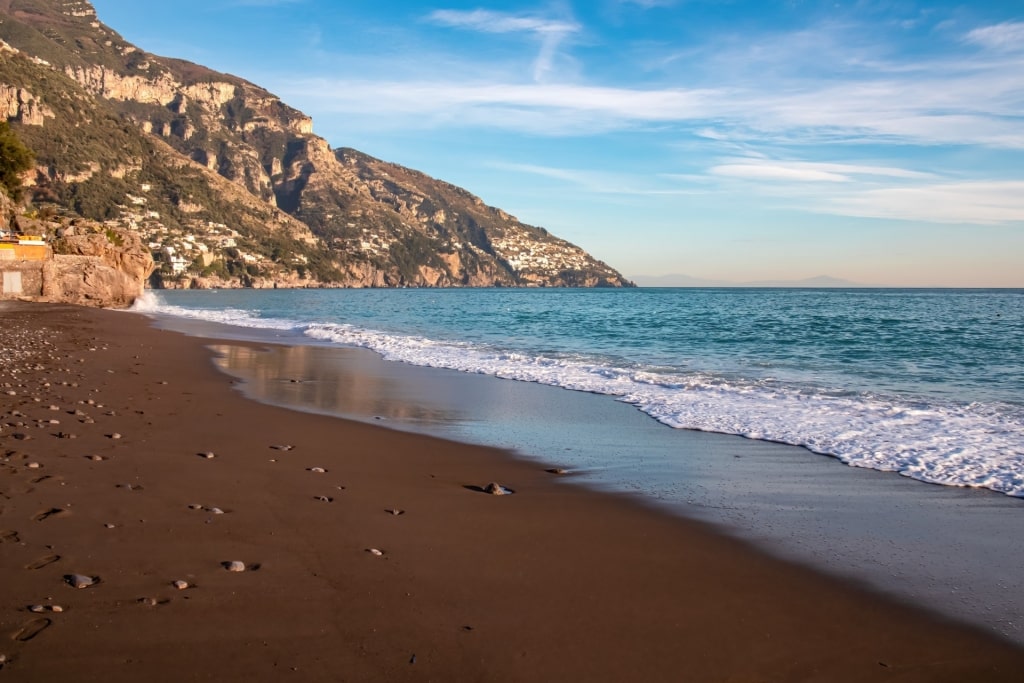
Fornillo Beach
If you find the glinting from diamante-studded swimwear a little distracting while at Positano Beach, make your way to Fornillo, one of the best beaches on the Amalfi Coast. The town’s second-largest basking spot is reached after a scenic 15-minute walk, with steps, from Positano Beach’s pier.
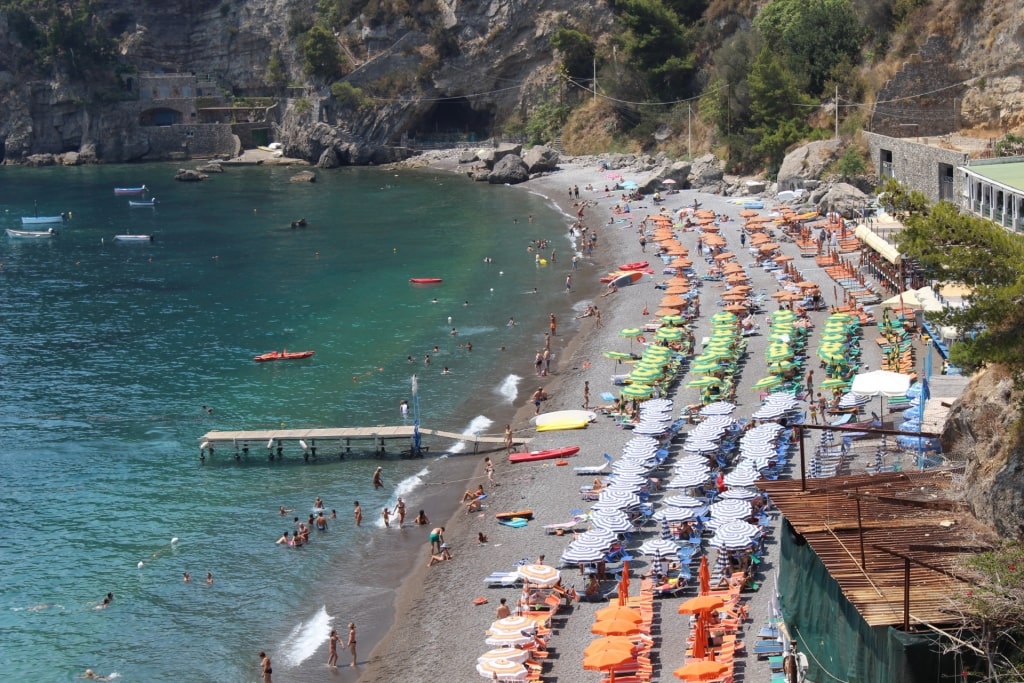
Fornillo Beach
You’ll arrive in a scene similar to that which you’ve left—regiments of striped umbrellas, restaurants colonizing the borders—but with the intensity significantly dialed down.
You’ll also notice, as you make your way across the pebbles to the lapping waves, that the water is distinctly clearer here than off the main beach.
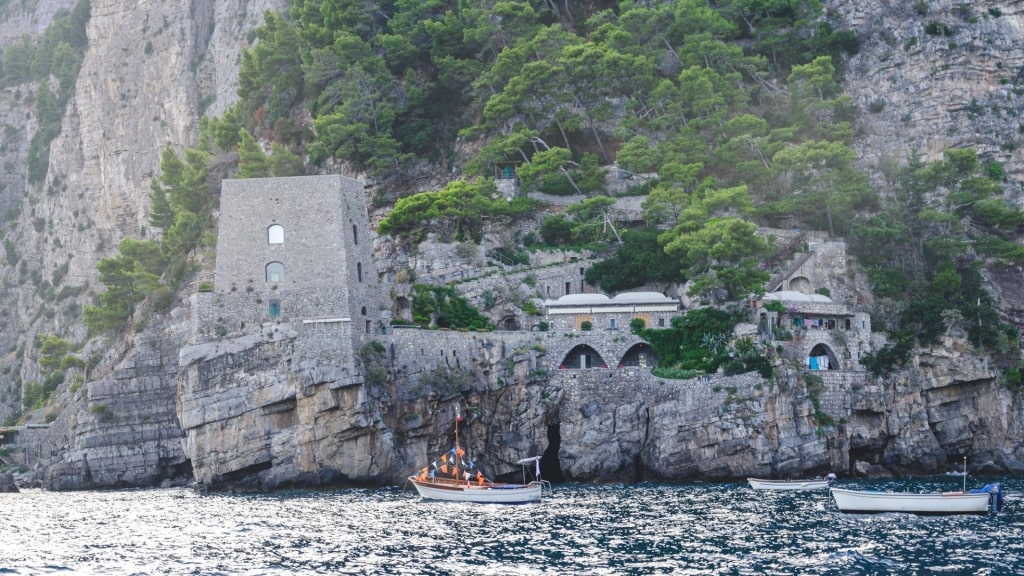
Torre del Fornillo
History is also more clearly in focus at this sunny spot, with the stone water towers of Torre Trasita and Torre del Fornillo at either end of the beach like medieval lifeguard stations. Fornillo was also popular with Emperor Tiberio, and its name heralds from that era of the Roman empire.
If you have a little too much vino bianco at one of the bars, you can opt to take the shuttle boat back to the main beach instead of repeating the walk.
Walk the Path of the Gods
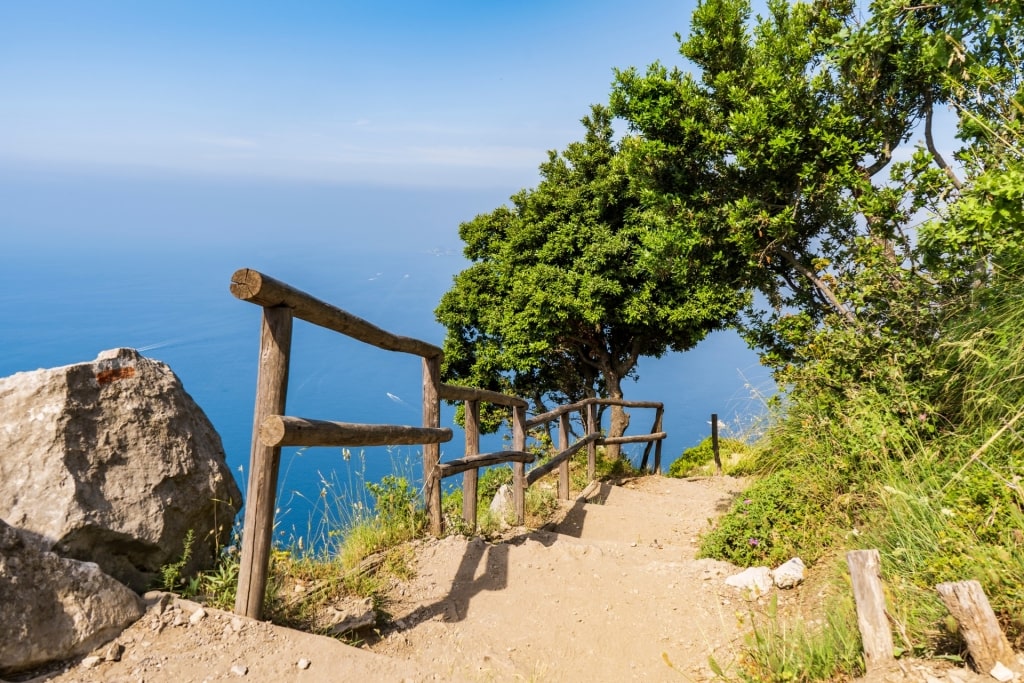
Path of the Gods
One of the best things to do in Positano is to pull on your walking shoes and hike the Il Sentiero degli Dei, or the Path of the Gods.
This network of ancient mule routes rambles across the flanks of Mont Sant’Angelo a Tre Pizzi, connecting the Amalfi’s beautiful towns and villages. Etched into the mountainside at 1,640 feet above sea level, the hike is a series of spectacular coastal views. It’s the Amalfi’s natural, five-mile-long balcony.
Clearly marked by red banded signs that indicate where you are along the route, the Path of the Gods typically ends in the town of Nocelle, only a short bus ride (or 1,500-step stairway) from Positano. The trailhead feeds out of southerly Bomerano.
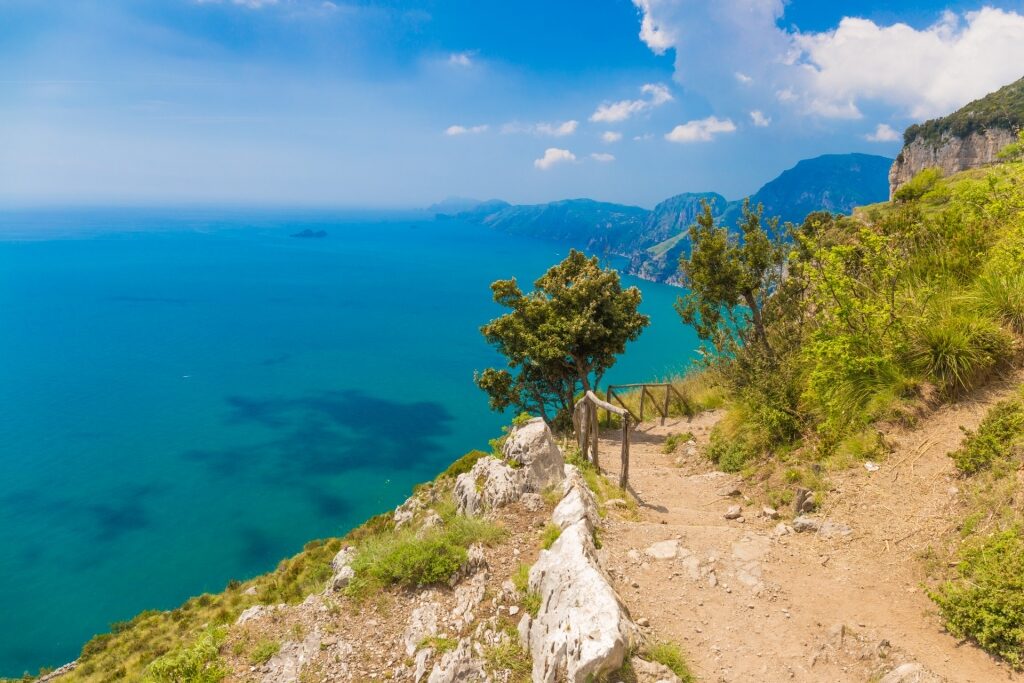
Path of the Gods
You’ll wander past stands of fragrant cypress, feel the breeze in the shade of stone pines, before emerging to breathtaking vistas of the terraced hills spilling towards the sapphire sea.
Along some of the more precipitous stretches of the trail, ineffective-looking rustic barriers persuade you to keep to the inside. But, even in high season, the route never feels busy.
With all the photographic opportunities, give around three hours to complete this easy-to-moderate hike. Pack plenty of water, although there are two excellent cafés that serve either end of the route.
You can also broaden your refreshment options by making the steep descent down to one of the coastal villages along the way.
Read: When Is the Best Time to Visit the Amalfi Coast?
Be Dazzled by the Grotta dello Smeraldo
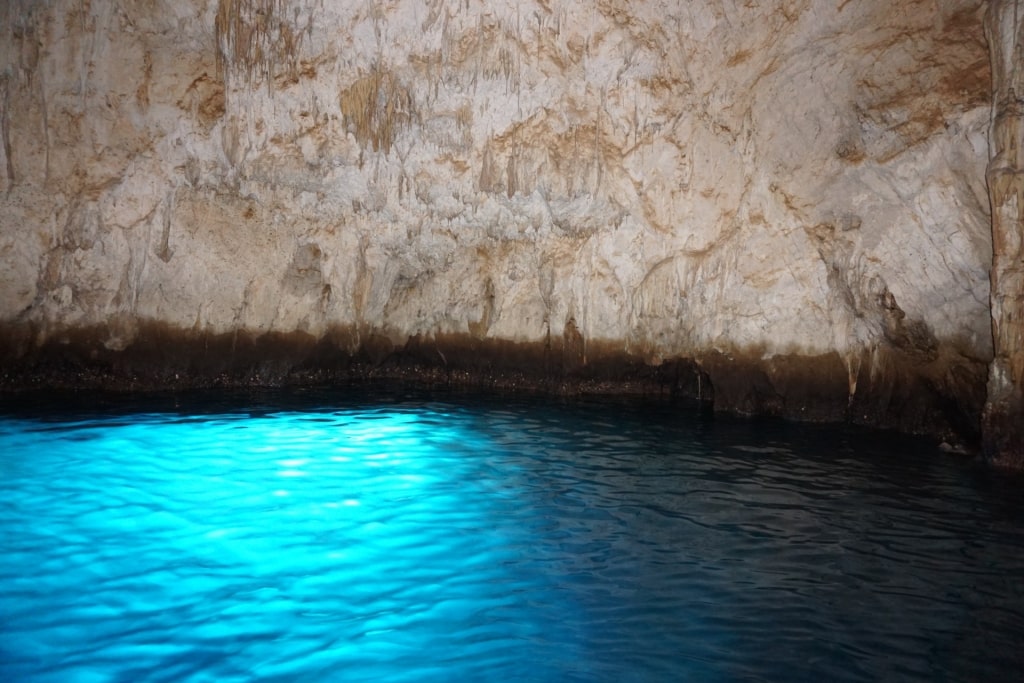
Grotta dello Smeraldo
One of the most peaceful activities in the area is to go on a boat trip to the Emerald Grotto (or Grotta dello Smeraldo). This stunning karst cavern, found in the bay of the village of Conca dei Marini, was for centuries only a rumor among the Amalfi fishermen.
In 1932, one Luigi Buonocore rowed his way into local lore when he accidentally came across the grotto, no doubt open-mouthed at the emerald glow that illuminated the cave as the light hit the water.
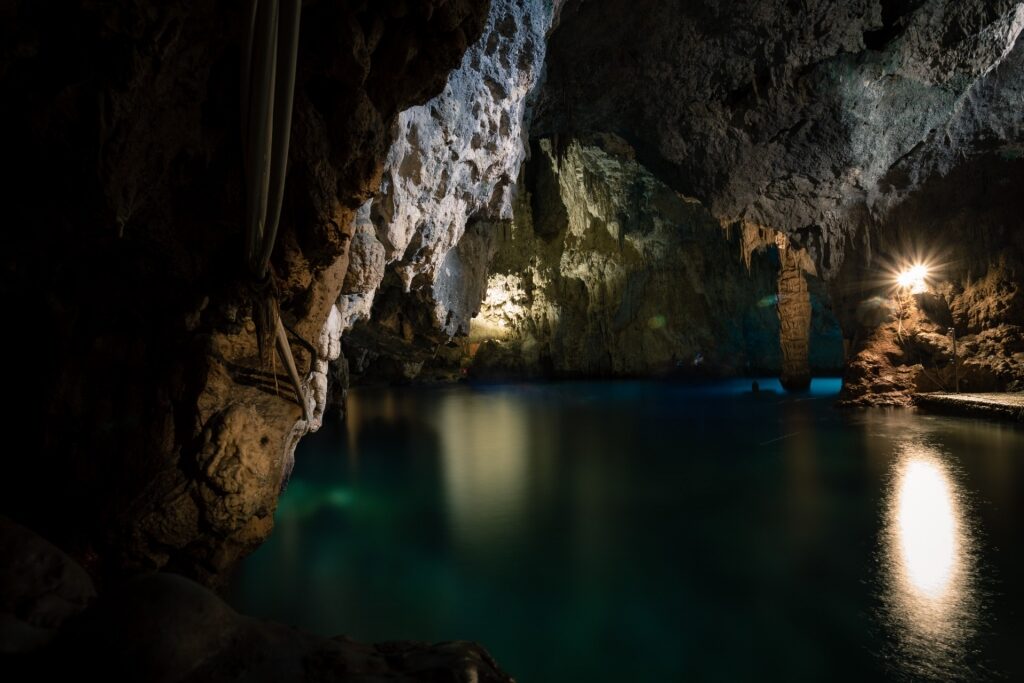
Grotta dello Smeraldo
Beyond the stunning colors, the cave is home to remarkable stalactites and stalagmites, the most striking formations given names such as the “Venetian Shawl”, or “Garibaldi’s Head”. As if this cave didn’t offer enough already, every Christmas, flowers are placed by divers among the sunken nativity scene installed in this “temple of the sea”.
The cave can be accessed either by boat, from the village pier, or by parking along the coastal highway. From the road, it’s easy to find, with stairs and an elevator pointing the way. Try to visit on a calm, sunny day to enjoy this natural marvel to the best effect.
Taste Limoncello in Sorrento

Sorrento
You’ll find Limoncello—a zingy lemon liqueur—all over Amalfi, and on offer in every bar and restaurant in Positano. Typically, it’s a digestif, served chilled, but there are excuses to enjoy limoncello at any time of day, especially in a granita or gelato in the heat of an Italian summer.
Purists who want to see how this delicious treat is made can travel 40 minutes west along the roads that snake through the Lattari Mountains and to summery Sorrento. Popular as a seaside retreat since Roman times, this beautiful town sits on a high cliff overlooking the Bay of Naples.
Lemons swell to impressive sizes in the town’s sunlit groves and it’s this immaculate citrus led previous generations of Sorrentini to create limoncello.

Villa Massa, Sorrento
As Sorrento is still a production hub for this quintessentially Italian tipple, it’s possible, and encouraged, to go on a limoncello tasting. Learn the secrets of this culturally important drink at an arranged distillery tour and tasting like that found at Villa Massa.
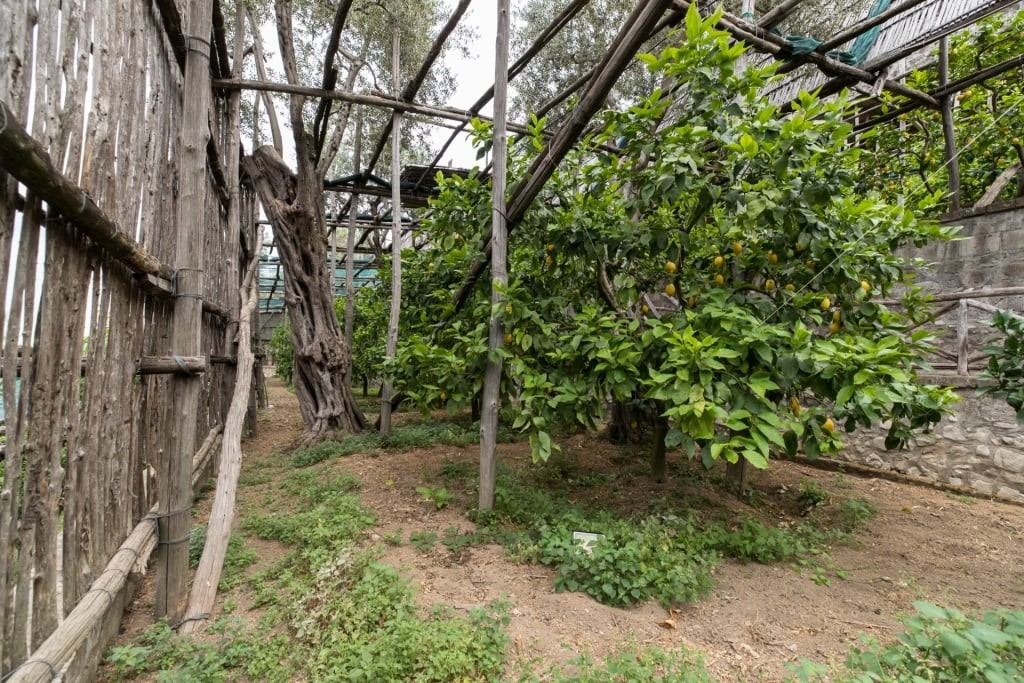
Villa Massa, Sorrento
At Villa Massa, as you walk beneath the traditional chestnut-wood frames protecting the valuable lemon trees from the elements, you’ll learn about its century-old family recipe and the production process for limoncello (so simple that you’ll begin to consider making your own at home). A reviving tasting is the finale, with a shot glass brimming with summer.
If you’re more of a wine-lover, Sorrento and its surroundings also produce some of the superb wines that Italy is known for. One to look out for is Lacryma Christi, a blend that recreates what the Ancient Romans would have poured at only the best bacchanals.
Eat Award-Winning Pastries in Minori
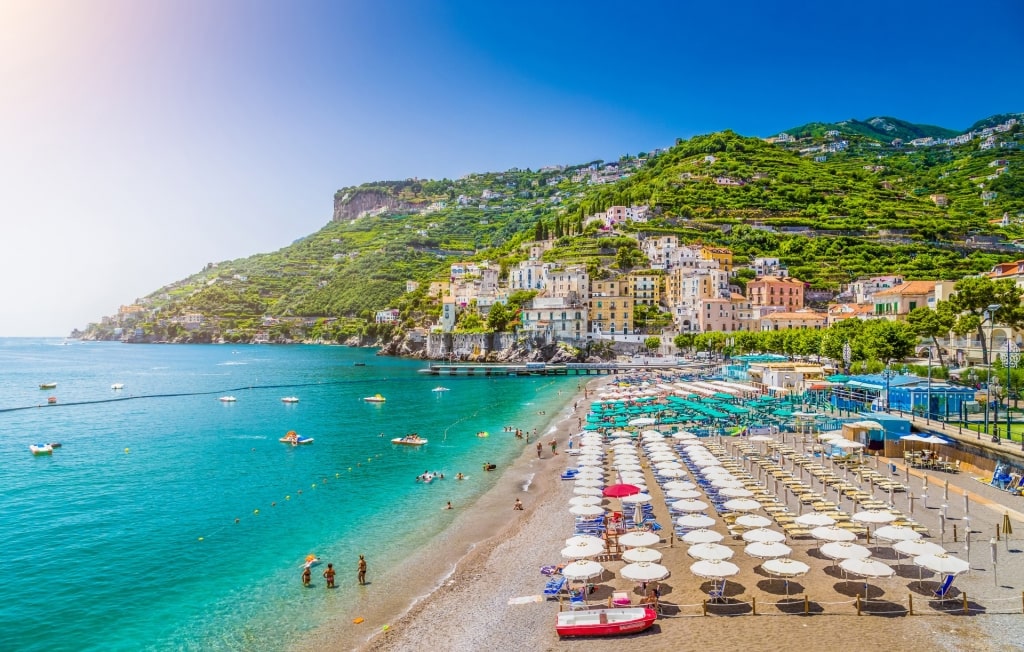
Minori
Just under an hour east of Positano, past Amalfi, is the seaside town of Minori.
Laid-back Minori is a breath of fresh air amid the Gucci glam that predominates along this famous stretch of coastline. A vision of peach, sugar-white, and canary-yellow homes set against the precipitous hillside—but with much of the town’s maze of lanes located on blessedly flat ground—this is a place to amble and soak up the local character.
For many, however, a visit to Minori is about the “King of Panettone”. Sal de Riso’s café is located along the town’s palm-lined boulevard. Behind the glass display cases within, artistically finished treats are laid out in a chic, tiled room.

Delizia al Limone
His most famous bakes are the Delizia al Limone, a limoncello-drizzled sponge topped with a dome of custard and lemon cream, made from lemons plucked from de Riso’s own grove. Or try the heavenly Ricotta e Pere cake. Created by Riso in 1988, this brings together a hazelnut sponge with cream of Tramonti ricotta and another cream, infused with pear pieces.
However, if you’d like to try something from Minori, order the Melanzane al Cioccolato. De Riso uses his grandmother’s recipe to create a magnificently moist rectangle of chocolate cake made with eggplant.
Spread Out on the Amalfi’s Coast’s Best Beach
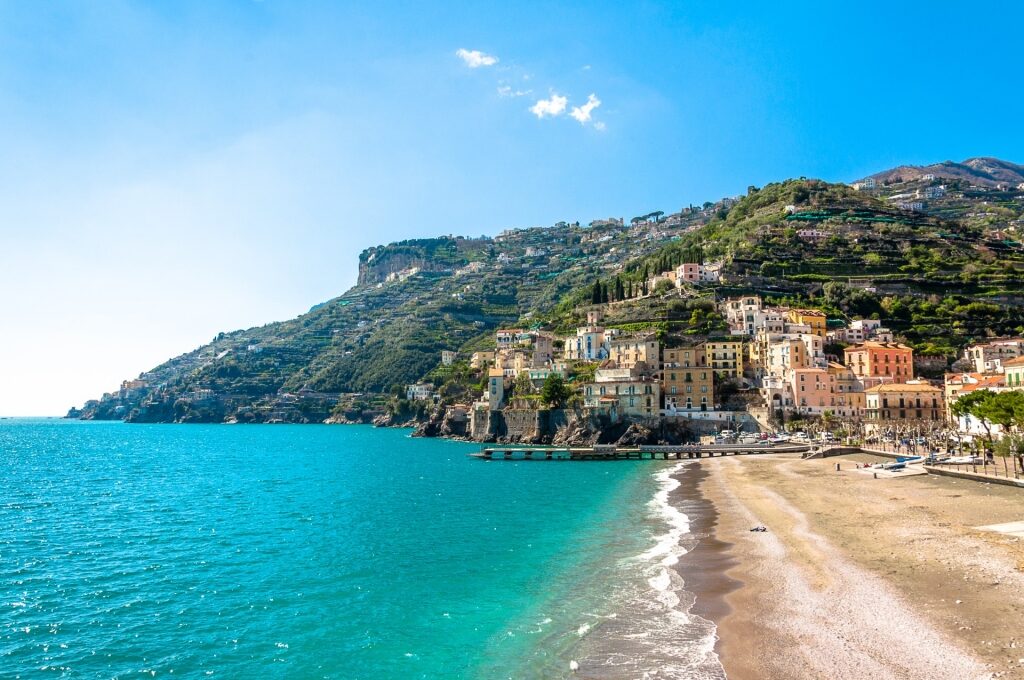
Maiori
A little further along the coast from Minori is Maiori. A favorite shooting location for neo-realist director Robert Rossellini, its historic streets were featured in four of his films.
You’ll understand his obsession as you explore. Stop in tiny boutiques and alight on al fresco café seating in atmospheric passageways for a reviving macchiato. Once you’ve seen the town, it’s time to dig your toes into Maiori’s famed stretch of sand.
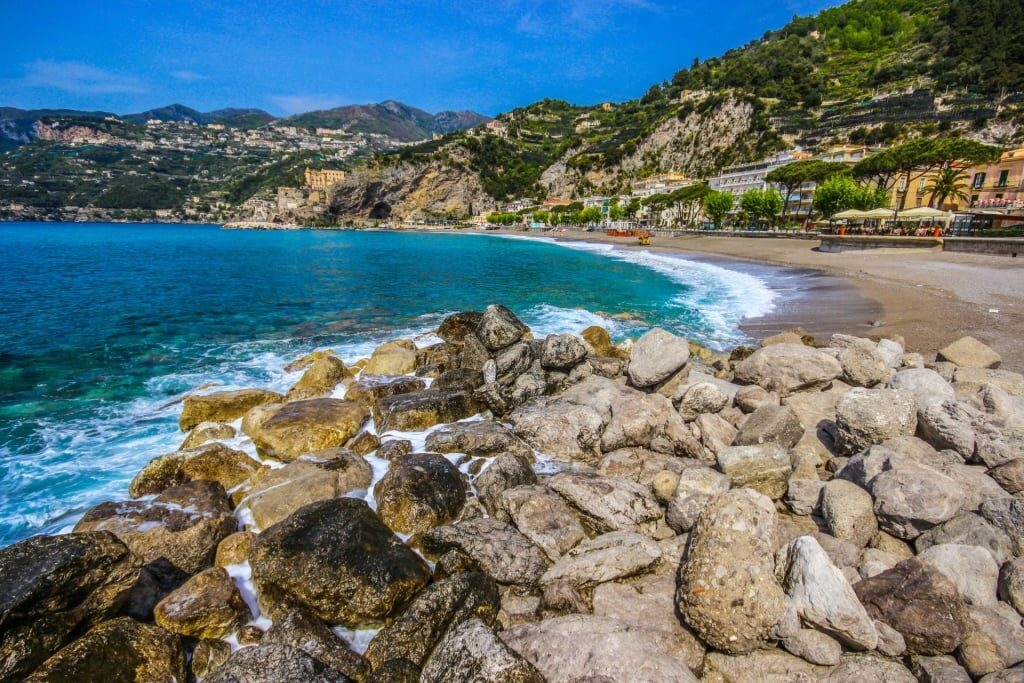
Maiori Beach
And what a stretch it is. Maiori’s beach is the longest in the Amalfi, the result of a landslide that reshaped the seafront in the 1950s. At one of Italy’s best beaches, you can expect the glamor of Positano except with enough space to flee the poseurs if you so desire.
Find a lounger at one of the beach clubs, or make your way to the good-sized free beach areas at either end.
Read: Best Things to Do on the Amalfi Coast
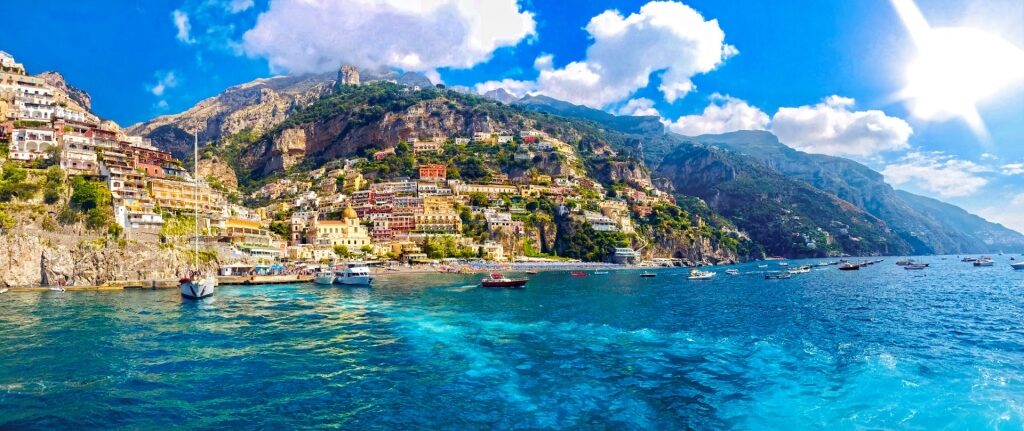
Positano
Discover the best things to do in Positano for yourself on a cruise to Italy’s Amalfi Coast and enjoy its emerald grottos, beautiful beaches, and peerless pastries. Browse Celebrity’s itineraries and plan a memorable vacation to this destination of effortless glamor.
